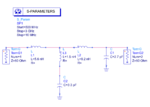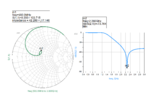prusaga
Newbie level 3
Hello everyone,
I am new to PCB design. I am working on RF based PCB design with SMA antenna. I am working from a reference design whose filter design values are unclear. I have already tested a board and failed to make it work. This time I want to make sure that my component values and trace lengths are perfect.
I have installed ADS but confused as to what tools to use like harmonic balance or impedance matching tool etc. For PCB design I am using KiCAD.
Thank You.
I am new to PCB design. I am working on RF based PCB design with SMA antenna. I am working from a reference design whose filter design values are unclear. I have already tested a board and failed to make it work. This time I want to make sure that my component values and trace lengths are perfect.
I have installed ADS but confused as to what tools to use like harmonic balance or impedance matching tool etc. For PCB design I am using KiCAD.
Thank You.

